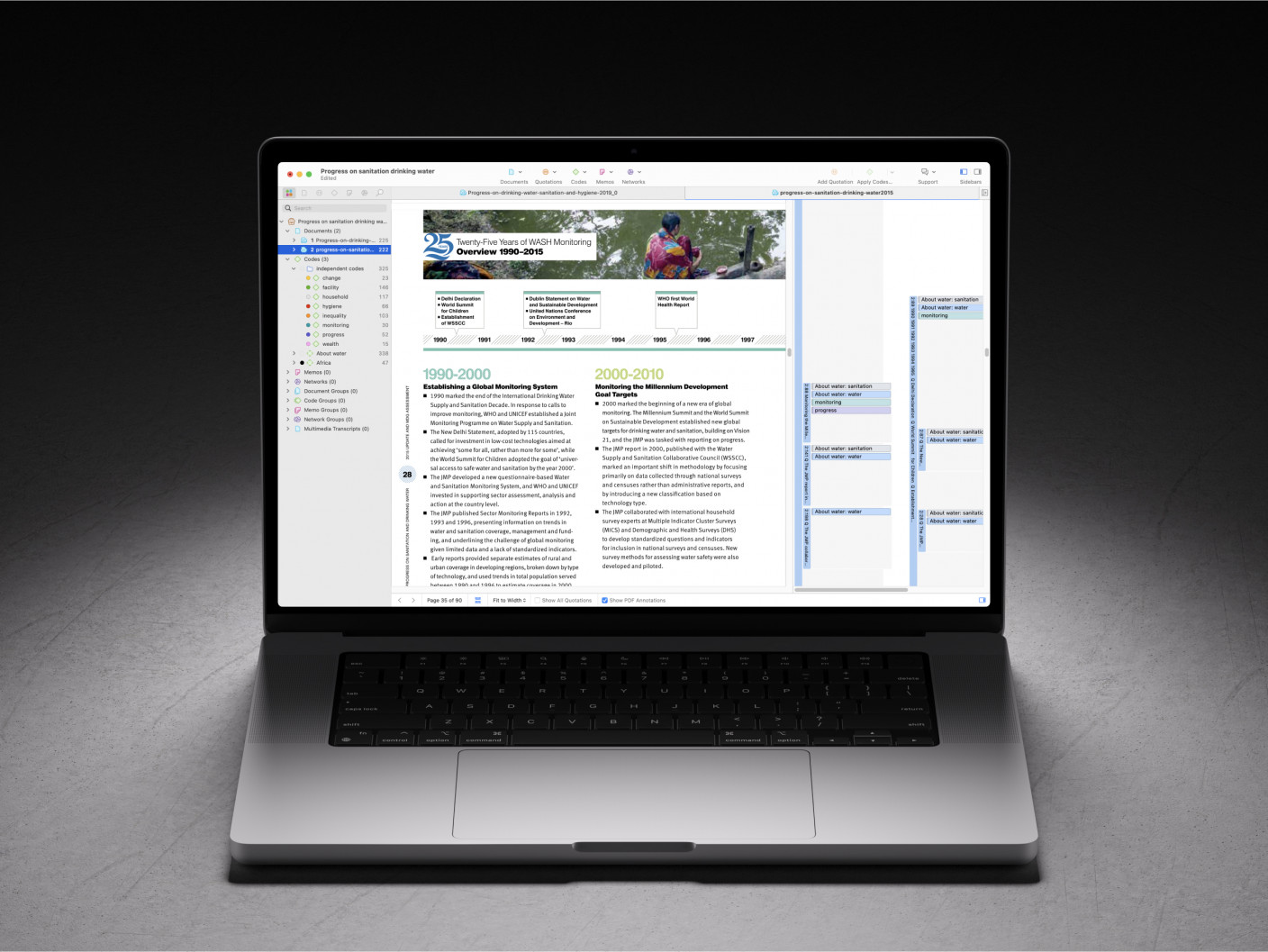- What is Mixed Methods Research?
- Advantages of Mixed Methods Research
- Challenges in Mixed Methods Research
- Common Mistakes in Mixed Methods Research
- Mixed Methods Research Paradigms
- Validity & Reliability in Mixed Methods Research
- Ethical Considerations in Mixed Methods Research
- Mixed Methods vs. Multiple Methods Research
- Mixed Methods Research Designs
- How to Choose the Right Mixed Methods Design
- Convergent Parallel Design
- Explanatory Sequential Design
- Exploratory Sequential Design
- Embedded Mixed Methods Research Design
- Transformative Mixed Methods Design
- Multiphase Mixed Methods Research Design
- How to Conduct Mixed Methods Research
- Sampling Strategies in Mixed Methods Research
- Data Collection in Mixed Methods Research
- Triangulation in Mixed Methods Research
- Data Analysis in Mixed Methods Research
- How to Integrate Quantitative & Qualitative Data?
- How to Interpret Mixed Methods Research Findings?
- Software Tools for Mixed Methods Data Analysis
- How to Write a Mixed Methods Research Proposal
- How to Write a Mixed Methods Research Paper?
- Reporting Results in Mixed Methods Research
- Mixed Methods Research Examples
- How to cite "The Guide to Mixed Methods Research"
How to Write a Mixed Methods Research Proposal
A research proposal outlines a structured plan for conducting a study, detailing how the researcher will address specific questions or problems. Given the complexity and numerous decision points inherent in mixed methods research, a well-crafted proposal serves as the foundation for a successful study.

Introduction
Researchers write research proposals for various reasons. A research proposal serves as a structured plan that outlines the study’s purpose, methods, and significance. While not every study requires a formal proposal, it is often necessary in specific situations. Researchers applying for grants, seeking approval from an Institutional Review Board (IRB), or students needing permission to proceed with their research frequently prepare detailed proposals to justify their study’s relevance and feasibility.
A mixed methods research proposal has to convey to its readers why the research is important, what problem is being tackled, and how the researcher plans to address this problem. To do this, the researcher must have a strong introduction that gives background into the issue, exposes the problem, the population involved, and why their research requires mixed methods.
In this article, we will outline the basic steps for writing a mixed methods research proposal, breaking down each essential section.
What to include in a mixed methods research proposal?
A well-structured proposal must clearly define the research question, explain why mixed methods are appropriate, and outline how data will be collected, analyzed, and integrated. Writing a strong proposal requires careful planning to ensure the research design aligns with the study's objectives.
Proposal introduction
An introduction aims to engage readers and motivate them to continue exploring the research. It should pique curiosity, clearly present the research problem, and outline the study's purpose and research questions. This is crucial for research proposals for a thesis or grant funding.
An effective introduction often follows a structured approach. The initial section offers a broad overview, the next section narrows the focus to the research purpose, and the final part specifies the research questions. According to Creswell (2018), this layered approach ensures clarity and reader engagement.
Creswell recommends that introductions include five key components, each presented in a separate paragraph:
- The topic: Begin by introducing the broad subject area of the research. This part is crucial, as a vague or overly complex topic can discourage readers. Creswell likens this process to gradually narrowing the focus, starting with general statements before honing in on specifics. Use an engaging narrative hook, such as impactful statistics, a notable issue, or references to previous discussions. The goal is to draw the reader in while highlighting the topic’s relevance.
- The problem: Clearly state the specific issue or challenge the research aims to address. This might involve critical societal concerns, such as rising high school dropout rates or insufficient participation in health screenings. Explain why this problem deserves attention and its connection to larger academic or societal concerns.
- The existing literature: Provide a brief overview of what previous research has revealed about the issue. Summarize key findings without delving into a full literature review. This section demonstrates that the problem has been identified and studied but remains in need of further exploration.
- Gaps in the literature: Identify shortcomings or unanswered questions in current research. These might include underexplored variables, neglected populations, or conflicting findings that need resolution. Highlight why these gaps matter and how your study—potentially using a mixed methods approach—addresses them. For example, you could note if prior studies relied exclusively on qualitative or quantitative methods without integrating both.
- The beneficiaries: Conclude by outlining who will benefit from the research, such as policymakers, educators, researchers, or community members. Clarify the study’s practical or theoretical contributions and its potential impact on these groups.
Purpose statement
After completing the introduction, the next step is to craft the purpose statement. This element is crucial to the research proposal as it articulates the primary objective of the study. A clear and well-defined purpose statement provides focus and direction, ensuring readers can easily follow the research.
When presenting the study’s details, emphasize the content before discussing the method. If the research involves data collection on a particular topic, begin by explaining the topic or focus area. Then, describe the method used, such as focus groups, interviews, or quantitative techniques. This approach of addressing content first and methods second helps readers grasp the importance of the information being collected before understanding how it is gathered.
Example:
"The purpose of this explanatory sequential mixed methods study is to first examine the statistical relationships between high school students' academic motivation and standardized test performance through a survey (quantitative phase) and then explore students’ personal experiences regarding motivation through in-depth interviews (qualitative phase) to gain deeper insights into the observed patterns."
Research questions
When writing a mixed methods research proposal, it is important to be clear with the research questions that will be answered with the research. In mixed methods research, research questions often encompass quantitative hypotheses or questions, qualitative questions, and mixed methods questions, structured to align with the selected research design.
Quantitative hypotheses or research questions focus on clearly defined variables, often grounded in a theoretical framework. These questions aim to compare groups, examine relationships, or describe trends by specifying independent, dependent, mediating, moderating, and/or covariate variables. A theory-driven approach is central to quantitative research, ensuring that questions test theoretical constructs. Hypotheses, often predictive in nature, or non-directional questions, such as exploring correlations, are carefully crafted to follow a logical sequence. Typically, the independent variable is presented first, followed by the dependent variable and any covariates, ensuring clarity and coherence in the research design.
Example: "To what extent does classroom engagement predict standardized test scores in high school students?"
Qualitative research questions adopt an exploratory approach, beginning with a central, overarching question that sets the focus for the study. This central question can be followed by 2–7 sub-questions or objectives that outline how exactly the main research question will be addressed, thus breaking the larger inquiry into manageable parts. Qualitative questions use open-ended language, often starting with "how" or "what," to encourage in-depth exploration; in contrast, "why" questions are more common in quantitative research. Qualitative research questions focus on a single phenomenon, aiming to uncover its nuances. Exploratory verbs, such as "discover," "understand," "explore," or "describe," emphasize the interpretive nature of qualitative inquiry. Flexibility is vital, because questions may evolve during fieldwork as new insights emerge. When needed, qualitative questions can include specific details about participants or settings, such as exploring the meaning of self-esteem for middle school adolescents.
For example: "How do students perceive the role of motivation in their academic performance?"
Mixed methods research questions bridge qualitative and quantitative approaches, ensuring alignment with the research design. For instance, in a convergent parallel design, a question might explore the extent to which the qualitative and quantitative findings are in agreement. In an explanatory sequential design, the focus could be on how the qualitative data elucidates the quantitative outcomes. Exploratory sequential designs often ask whether qualitative findings can be generalized to a broader population. Similarly, questions in intervention designs address how qualitative insights enhance the interpretation of experimental results, while those in social justice or transformative designs probe deeper into inequalities revealed by quantitative findings. Multiphase designs combine questions from various phases to address overarching research goals. These mixed methods questions often emphasize the intersection of qualitative and quantitative data, but they may also adopt a content-focused or hybrid approach depending on the study’s objectives.
Philosophical foundations
he philosophical foundation of a mixed methods study defines how knowledge is generated and interpreted. Mixed methods research often embraces pragmatism, but depending on the study’s objectives, other perspectives may also be relevant. Your proposal should explicitly state your philosophical worldview and justify its alignment with your research design.
Navigating constructivist vs. postpositivist tensions
Mixed methods research involves blending two epistemological perspectives. Constructivism, which underlies qualitative research, emphasizes subjective meanings, context, and interpretation. Postpositivism, which informs quantitative research, emphasizes objectivity, measurement, and statistical validity. Your proposal should explicitly discuss how your study balances these perspectives. For example, will qualitative findings help explain statistical trends? Will quantitative data provide broader generalizability to qualitative insights? How will you integrate these paradigms in data analysis and interpretation? Addressing these tensions in your proposal demonstrates theoretical and methodological coherence.
Pragmatism as a dominant framework
Most mixed methods research is grounded in pragmatism, which prioritizes problem-solving over strict adherence to either qualitative or quantitative paradigms. This approach allows researchers to use different methods to answer research questions rather than being constrained by methodological purity. Pragmatism focuses on real-world problems rather than abstract methodological debates and prioritizes the usefulness and applicability of results over strict theoretical consistency. This framework provides flexibility in choosing methods best suited to answering research questions. If your study is problem-driven and seeks practical solutions, emphasizing a pragmatic foundation can strengthen your proposal.
Transformative perspective for social justice-oriented research
If your research focuses on marginalized populations, social inequities, or policy change, a transformative paradigm may be more appropriate. This perspective integrates research with social advocacy and aims to amplify the voices of underrepresented groups. The transformative paradigm is often associated with participatory and action research approaches. It challenges power dynamics in research by involving participants in the research process and uses both qualitative and quantitative data to advocate for social change. Your proposal should clarify how integrating qualitative and quantitative approaches advances equity and representation in your study.
Literature review
A literature review is a necessary part of a research proposal because it provides background on the topic, identifies gaps in existing research, and justifies the need for the study. It shows what has already been studied and explains how the proposed research will contribute new insights. For a mixed methods study, the literature review should include qualitative, quantitative, and mixed methods research to highlight why integrating both approaches is essential. It also connects the study to relevant theories and demonstrates a clear understanding of the field. Including a literature review strengthens the proposal by showing its significance and grounding it in established research.
Research design and methodology
When conducting mixed methods research, the methodology section serves as the blueprint for how the study will be executed. Your proposal should outline the research design, integration of methods, sampling strategies, data collection procedures, and data analysis techniques. Clearly defining these elements ensures that the study follows a structured, systematic approach that aligns with the research objectives. Given that mixed methods research combines both qualitative and quantitative approaches, the methodology must be designed to facilitate the seamless integration of both types of data. This requires careful planning to determine when and how qualitative and quantitative methods will be combined, such as through a convergent, explanatory, or exploratory design. The methodology should also specify the sampling strategy for qualitative and quantitative components, ensuring that participants or data sources are selected in a way that is rigorous and supports the overarching research question.
Data collection and analysis
The proposal should describe the data collection procedures in detail, explaining how qualitative data (e.g., interviews, focus groups, observations) and quantitative data (e.g., surveys, experiments, statistical records) will be gathered. This includes considerations such as the timing of data collection, whether both types of data will be collected simultaneously or sequentially, and how data from different sources will be linked. A clear rationale should be provided for these choices, demonstrating how they align with the study’s objectives and research questions.
The methodology should also address data analysis techniques, outlining how qualitative data will be coded and interpreted and how quantitative data will be statistically analyzed. The proposal must explain how these analyses will be integrated, ensuring that findings from both methods complement and inform one another rather than being treated as separate, unrelated components.
Additionally, the methodology section should discuss potential challenges and limitations of using a mixed methods approach. Issues such as discrepancies between qualitative and quantitative findings, differences in sample sizes, and the complexity of integrating diverse data types should be acknowledged. Strategies for addressing these challenges, such as triangulation, cross-validation, or iterative refinement of data collection and analysis procedures, should be included.
Justifying a mixed methods approach
The final part of your proposal should clearly justify why a mixed methods approach is essential for your study. This justification must demonstrate that qualitative or quantitative methods alone cannot fully address your research questions, making their integration a necessity rather than a preference. Your justification should first highlight specific gaps in existing research that neither qualitative nor quantitative methods alone can fully address. Consider the following questions:
- What key aspects of your research topic remain unresolved in previous studies?
Have prior quantitative studies identified statistical patterns but failed to explain the underlying reasons for those patterns?
Have qualitative studies provided rich, contextual insights but lacked the generalizability needed for broader application?
- Why do existing research methods fail to provide a complete picture?
If past studies have produced contradictory findings, how can mixed methods help resolve inconsistencies?
If the phenomenon under investigation has multiple dimensions, does mixed methods allow you to examine both measurable outcomes and subjective experiences?
Clearly stating the limitations of prior research and showing how your study overcomes them strengthens your rationale for a mixed methods approach.
Conclusion
A well-structured mixed methods research proposal is essential for outlining the study’s purpose, methodology, and significance. By integrating qualitative and quantitative approaches, researchers can gain a deeper understanding of complex issues that a single method alone may not capture. A strong proposal includes a clear introduction, research questions, philosophical foundations, literature review, and methodological details to ensure coherence and rigor. Ethical considerations, limitations, and challenges should also be addressed to enhance transparency and credibility. Ultimately, a carefully designed mixed methods proposal provides a solid foundation for conducting meaningful and impactful research.
References
Michigan Medicine. (2021). John Creswell mini-workshop [Video]. YouTube. Retrieved February 19, 2025, from https://www.youtube.com/watch?v=ZaKiksTO7yA&list=PLNxqP-XbH8BKvL1hYBohlnQ8r2-26rv_V&index=5&ab_channel=MichiganMedicine


